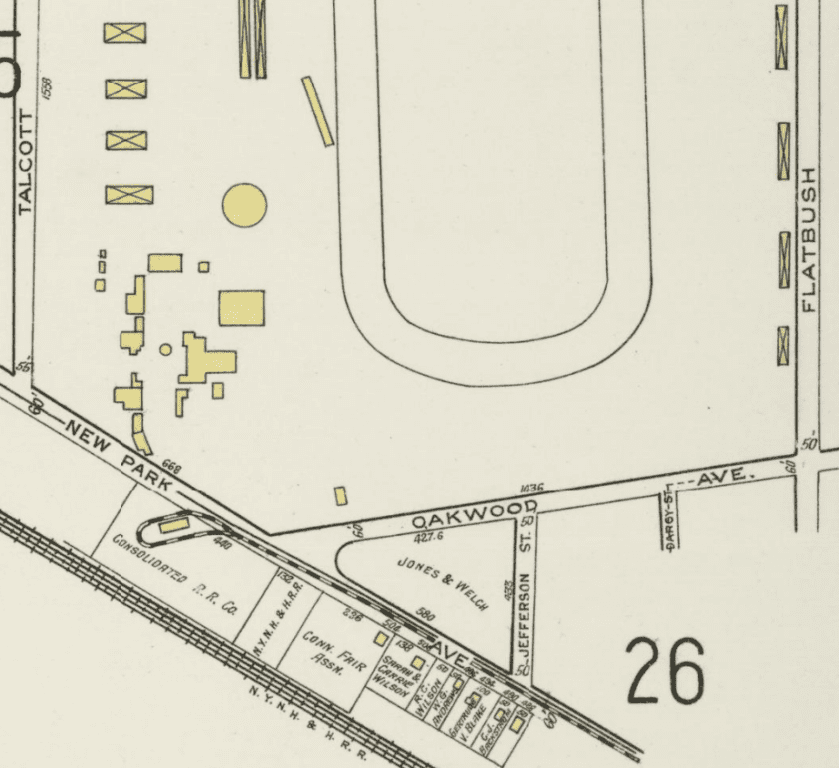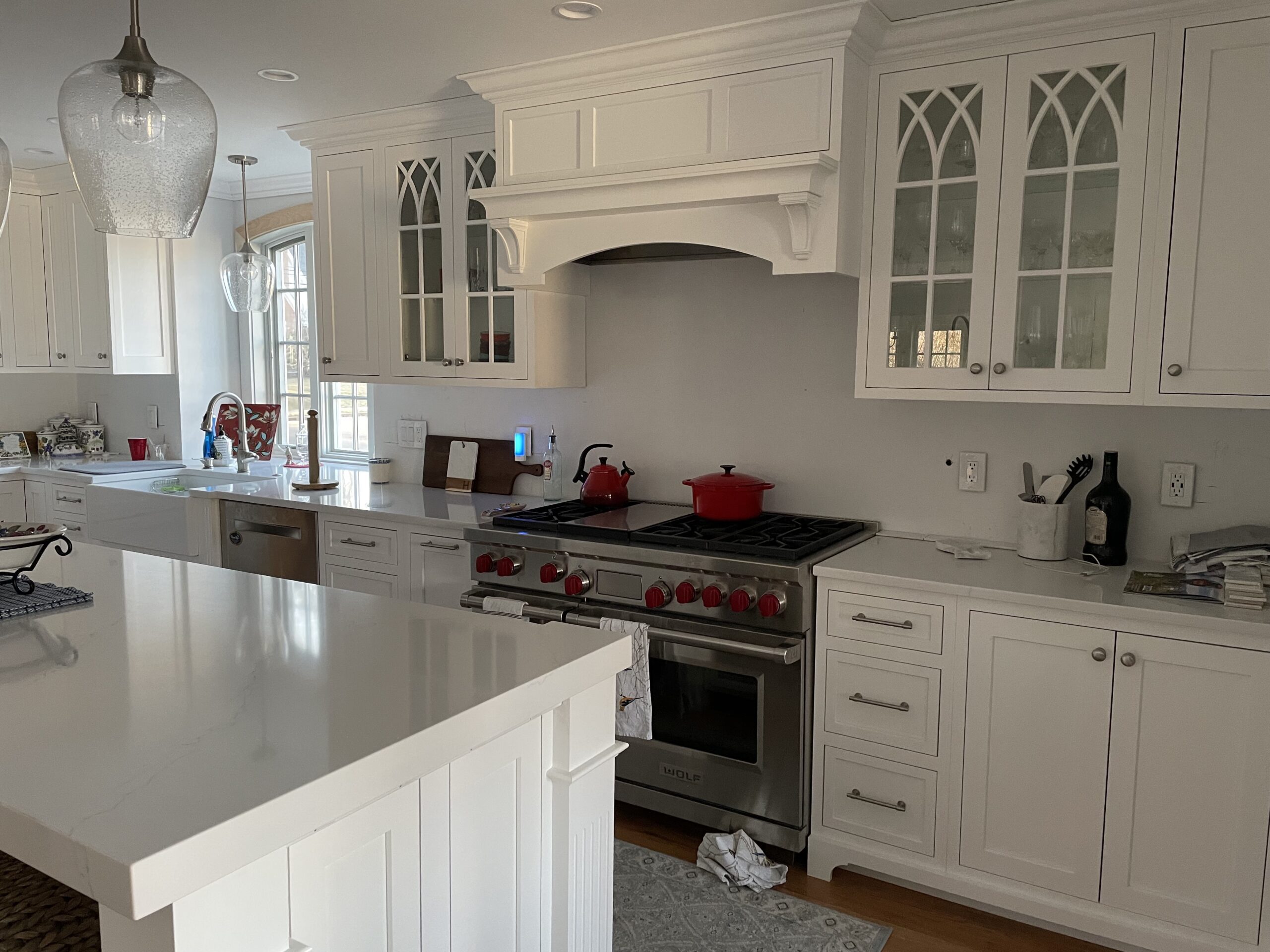From the West Hartford Archives: Trolley Car at Charter Oak Park

Audio By Carbonatix

Trolley car at Charter Oak Park. Photo courtesy of Noah Webster House & West Hartford Historical Society
Historian Jeff Murray takes a look into West Hartford’s past to uncover some surprising information, stir up some memories, or reflect on how much life has changed – or hasn’t changed at all. Enjoy this week’s ‘From West Hartford’s Archives’ …
By Jeff Murray
This is a photograph of a trolley car along New Park Avenue, which stopped right at Charter Oak Park (and then Luna Park), just shy of Talcott Road.
Electric trolley lines had been steadily constructed across West Hartford since 1894, starting with Farmington Avenue. The south end of town, notably Elmwood, already had a train that ran along New Park Avenue between Parkville and Newington Junction, but by 1897, Elmwood residents were petitioning for direct service along New Britain Avenue. “The people of Elmwood feel much dissatisfaction with their transportation facilities and are ready for a trolley extension that will accommodate them.” The railroad was slowly going out of fashion, especially as it transitioned to electrification from steam power. The steam cars were reduced and the electrified trains were running more costly and less convenient, forcing many people to simply walk to Hartford or to another station.
In 1899, the trolley company, the Hartford Street Railway Company, agreed to extend a track south along New Park Avenue from Park Street. At the same time, they would extend the Park Street line into West Hartford to South Quaker Lane. News at the end of the 1890s was focused so much on the extensions of trolley lines and for good reason – transportation like this fueled residential development and in turn, development expanded the population outward and increased demand for extensions to new areas.
William Francis argued for a trolley extension along New Britain Avenue from the Hartford line into Elmwood by 1900 and argued that it would open up a large tract of territory for housing. He was right – both sides of New Britain Avenue from Hollywood Avenue to South Street were built up within ten years after the trolley line was extended west all the way to South Quaker Lane in 1901.
The track along New Park Avenue stopped at Charter Oak Park though (now the location of Home Depot and BJ’s). Charter Oak Park was established in 1873 on a stretch of Flatbush Avenue by the Connecticut Stock Breeders’ Association as a horseracing track. In fact, New Park Avenue didn’t even exist when the track was built and the road was laid out from Hartford south to New Britain Avenue as the avenue to the new park (of course).
The park featured a one-mile oval track and a grandstand accommodating up to 4,000 spectators. Charter Oak Park witnessed the evolution of hobbies and competitive sports over time. Beyond harness racing, it hosted college track and field events, bicycle races, and served as the venue for the Connecticut State Fair for many years. The extension of the trolley tracks south to the terminus at the park was meant to satisfy as many people as possible without the cost of extending it all the way to New Britain Avenue.
By stopping it at the park, most of the visitors from Hartford and beyond would be happy. That being said, the condition of the road was “dreadful,” as described in the summer of 1906. “Teams from the nearby brickyards crawl painfully over its uneven surface.” A few months after the San Francisco earthquake, the deadliest in American history and one that devastated that city, the Hartford Courant described New Park Avenue as being equal in terms of appearance.
At the end of 1906, Elmwood citizens pleaded for an extension of the trolley line from the park to Elmwood station at New Britain Avenue to accommodate the hundreds of factory workers at Whitlock Coil Pipe Company, but it never came to be.

Map of the trolley tracks along New Britain Avenue that stopped at the parks, 1917
There was still much work to be done in double-tracking the trolley to accommodate multiple cars that had to drop off patrons of the brand new Luna Park. A portion of the Charter Oak Park’s property had just been sold off for the construction of Luna Park. Located at the corner of Talcott Road and New Park Avenue, the park featured a variety of attractions, including a Ferris wheel and a miniature train ride. It drew inspiration from the success of similar parks like New York’s Coney Island.
The trolley was the lifeblood of such a park, ferrying thousands of people from Hartford into West Hartford – families, courting couples, teenagers, folks in their Sunday best. Oftentimes, Charter Oak Park racing was done in conjunction with Luna Park’s festivities, carrying cheers from the grandstand over the array of vendors selling peanuts, soda pop, and candies into the ears of passengers stepping off the trolley at the entrance to the park.
Many times, this was too much for the average person, especially in the West Hartford of old. In 1911, a man in his 40s found himself wandering around New Park Avenue in the morning and steadied himself to jump into Trout Brook from one of the bridges south of Talcott Road. Two young men saw this and jumped into action to stop him. They marched him up to Charter Oak Park and put him on the trolley back to Hartford. Michael Bell of Elmwood was arrested on the trolley in 1914 for using abusive language around women; others were fighting.
Other extensions of trolleys in this area were not approved. In 1912-13, residents appealed to the companies for an extension from South Quaker Lane over the hill to Corbin’s Corner. Ten years after Elmwood residents pushed for an extension of the Charter Oak Park line south to connect with the Elmwood line at New Britain Avenue, they made a second attempt. There were newer factories that would be greatly helped by this kind of connection, notably the New Departure Company on South Street.
The Business Men’s Association (the predecessor to the Chamber of Commerce) considered constructing trolley lines themselves to avoid having to go through the Connecticut Company, which was reluctant to spend money for what they considered little benefit. The Connecticut Company pushed back intensely, arguing that they had built a similar line in New Britain and it had been a severe loss.
The plan never went ahead, but the timing was a bit lucky. The increasing popularity of automobiles provided the public with alternative transportation options through the 1910s, reducing some of the reliance on trolleys. In addition, buses began to emerge in the 1920s as a flexible and cost-effective alternative. In the fall of 1920, the Chamber of Commerce pushed to raise money for a cross-town bus line that would connect the different school districts with the trolley system, allowing the people to come to the trolleys rather than the other way around.
The featured photograph was taken in either the late 1910s or 1920.
Through the 1920s, Charter Oak Park and Luna Park declined in popularity as other forms of entertainment took over and the trolley system was no longer sustainable in the long-term by the Great Depression. Elmwood residents complained about how the Connecticut Company was allocating older cars for this section; these cars had no upholstery or springs and could barely stay on the tracks. There was a general dissatisfaction towards the trolley service by the mid-1920s. As someone said about the Connecticut Company service, “Those miserable little cars are not good for long runs.”
By 1926, the first discussions of removing trolley tracks across town were being held, particularly in the north end. By the end of the year, the tracks on Steele Road had been dug up as the town favored bus service from the Connecticut Company. In 1936, the company replaced the double tracks on New Park Avenue with just a single line. Within a few years, the entire track was gone but by this point, cars and buses were more frequently used. This photo of the Connecticut Company trolley car at the loop shows the beginning of the end of the trolley lines in West Hartford.
Jeff Murray was born and raised in West Hartford and has been involved with the Noah Webster House & West Hartford Historical Society since 2011 when he was a high school student and won the Meyer Prize for his essay on local history. Jeff routinely volunteers as local history researcher uncovering information for numerous museum programs such as the West Hartford House Tour and West Hartford Hauntings. Jeff works as a data analyst at Pratt & Whitney.
Like what you see here? Click here to subscribe to We-Ha’s newsletter so you’ll always be in the know about what’s happening in West Hartford! Click the blue button below to become a supporter of We-Ha.com and our efforts to continue producing quality journalism.



